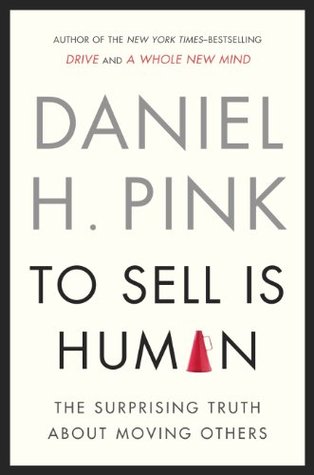More on this book
Community
Kindle Notes & Highlights
Read between
January 12 - February 3, 2020
try listing Fredrickson’s ten positive emotions—joy, gratitude, serenity, interest, hope, pride, amusement, inspiration, awe, and love—on your phone, computer, or office wall. Select one or two. Then in the course of the day, look for ways to display those emotions.
The more you explain bad events as temporary, specific, and external, the more likely you are to persist even in the face of adversity.
the key is to “dispute” and “de-catastrophize” negative explanations.
For more information, visit Seligman’s website (http://www.authentichappiness.sas.upenn.edu/Default.aspx), and take his Optimism Test to get a sense of your current style. And check out his classic book, Learned Optimism: How to Change Your Mind and Your Life.
1. Enumerate. Try actually counting the nos you get during a week.
2. Embrace.
Negativity and negative emotions are crucial for our survival.
try out the Rejection Generator Project (http://ow.ly/cQ5rl). Just choose your favored style of repudiation, type in your e-mail address, and in minutes you’ll receive a dream destroyer in your inbox.
the experts deemed the problem finders’ works far more creative than the problem solvers’.
the problem finders “were 18 years later significantly more successful—by the standards of the artistic community—than their peers” who had approached their still-life drawings as more craftsmanlike problem solvers.7
“The quality of the problem that is found is a forerunner of the quality of the solution that is attained . . .” Getzels concluded.
Today, both sales and non-sales selling depend more on the creative, heuristic, problem-finding skills of artists than on the reductive, algorithmic, problem-solving skills of technicians.
Identifying problems as a way to move others takes two long-standing skills and turns them upside down. First, in the past, the best salespeople were adept at accessing information. Today, they must be skilled at curating it—sorting
“unique selling proposition,” the idea that any product or service in the marketplace has to specify what differentiates it from its competitors.
Clarity depends on contrast.
contrast operates within, and often amplifies, every aspect of persuasion. That’s why the most essential question you can ask is this: Compared to what?
reducing consumers’ options from twenty-four choices to six resulted in a tenfold increase in sales.
“Adding an inexpensive item to a product offering can lead to a decline in consumers’ willingness to pay,”
curation is so important, especially in a world saturated with options and alternatives.
people derive much greater satisfaction from purchasing experiences than they do from purchasing goods.
experiential purchases made them happier than material purchases.
we tend to forget the small-level annoyances (ticks) and remember the higher-level joys (amazing sunsets).
Experiences also give us something to talk about and stories to tell, which can help us connect with others and deepen our own identities, both of which boost satisfaction.
As a result, framing a sale in experiential terms is more likely to lead to satisfied cus...
This highlight has been truncated due to consecutive passage length restrictions.
Merely assigning that positive label—helping the students frame themselves in comparison with others—elevated their behavior.
Being honest about the existence of a small blemish can enhance your offering’s true beauty.
What we really should do, they say, is emphasize our potential.
“the potential to be good at something can be preferred over actually being good at that very same thing.”
People often find potential more interesting than accomplishment because it’s more uncertain, the researchers argue.
don’t fixate only on what you achieved yesterday. Also emphasize the promise of what you could accomplish tomorrow.
A specific request accompanied by a clear way to get it done ended up with the least likely group donating food at three times the rate of the most likely who hadn’t been given a clear path of action.
The lesson: Clarity on how to think without clarity on how to act can leave people unmoved.
the most effective tools for excavating people’s buried drives are questions.
rational questions are ineffective for motivating resistant people.
Instant Influence.
don’t ask a binary, off-on, yes-no question.
Seek.
put together a list of the best sources
information.
scan those sources r...
This highlight has been truncated due to consecutive passage length restrictions.
at least fifteen minutes, two ...
This highlight has been truncated due to consecutive passage length restrictions.
Sense.
making an annotated list of Web links or even regularly maintaining your own blog. She recommends tending to this list of resources every day.
Once you’ve collected the good stuff and
organized it in a meani...
This highlight has been truncated due to consecutive passage length restrictions.
You can do this through a regular e-mail or your own newsletter, or by using Facebo...
This highlight has been truncated due to consecutive passage length restrictions.
“Putting content curation into practice is part art form, part science, but mostly about daily practice,” writes Kanter. For more, see her “Content Curation Primer”: http://www.bethkanter.org/content-curation-101/.
Right Question Institute
1. Produce your questions.
Generate a list of questions by writing down as many as you can think of, without stopping to judge, discuss, or answer any of them. Don’t edit. Just write the questions that pop into your head. Change any statements to questions.


